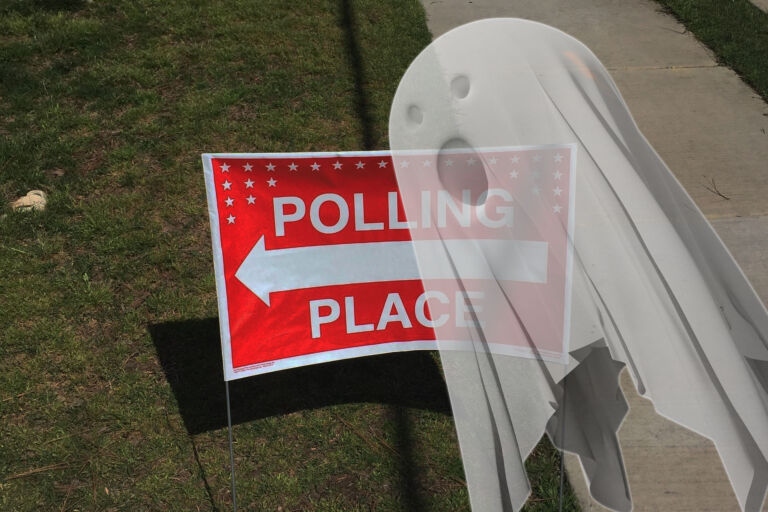Cary is the latest in a long list of North Carolina cities and school districts to harm taxpayers and electricity ratepayers by jumping on the solar bandwagon. The Cary city council approved the solar project outlined in The News & Observer on Tuesday. A private firm, Asheville-based FLS Energy, will install solar panels on city-owned property. Cary will get rent, and FLS Energy will get taxpayer and electricity ratepayer subsidies.
Unfortunately, the N&O ignored all of the important issues. For example, who would pay for the project? Since the N&O coverage reads like the city press release, why not just print that?
Here are just some of the facts the paper missed.
The reason that solar is so popular in North Carolina, a state that gets only a middling amount of sunshine (see the National Renewable Energy Laboratory solar maps), is that the legislature passed SB 3 back in 2007, the law that requires power companies to generate 12.5 percent of their electricity from renewable sources, including solar, by 2021, with electricity ratepayers paying for much of the cost of this expensive power.
At the time, the legislature was not concerned with the cost, but only with responding to the pressure from environmental groups and the good press "renewable energy" programs produce. Fortunately, the Beacon Hill Institute in Boston was concerned with the cost and conducted this policy study at the request of the John Locke Foundation. It shows SB 3 destroys 3,600 jobs, reduces disposable personal income by nearly $59 million, cuts the state’s gross domestic product by $140 million, and slashes state and local revenues by $43.5 million by 2021.
Getting taxpayers and electricity ratepayers to pay your electric bill
This September 2010 N&O report about the Holly Springs furniture company OFM shows why solar is so popular with private businesses and why it is such a bad deal for taxpayers and ratepayers.
According to the numbers in the story, we can make a rough calculation of who pays and who benefits. First, OFM gets the taxpayers to pay for half of the cost of the solar equipment (i.e., half of $1.4 million, or $700,000). Then OFM receives taxpayer-paid tax breaks worth $170,000. Then Progress Energy ratepayers pay OFM 18 cents per kilowatt-hour for electricity produced by the solar panels, while OFM buys power from Progress Energy for 6 cents per kilowatt-hour to run its facility — a net profit of 12 cents per kilowatt-hour. Over 20 years, that would amount to a $1.2 million "profit" from Progress Energy inflicted on ratepayers by the legislature when it passed SB 3.
We must remember that OFM must pay for one-half of the cost of the solar panels, but subtracting the $700,000 cost from the total subsidies above ($2.070 million), OFM gets a cool "profit" after that expense of $1,370,000 to its bottom line courtesy of North Carolina taxpayers and Progress Energy ratepayers.
And that is not all. OFM and other businesses that participate in this fleecing of taxpayers and ratepayers get glowing media reports like this one.
OFM Celebrates One-Year Anniversary of Solar Farm With Plans to Expand
Holly Springs, N.C. — This month office and school furniture manufacturer, distributor and wholesaler OFM is celebrating the one-year anniversary of the 250-kilowatt solar farm it installed on the rooftop of its headquarters in Holly Springs, N.C. last August. The company has since been producing more energy than it uses…
Why not expand when you can force taxpayers and ratepayers to pay your electricity bills? Businesses that feed at the public trough are nothing new. This example illustrates that the environmental movement is the new home of crony capitalism, with taxpayer and ratepayer subsidies for solar, wind, electric car batteries, new LED lighting, the list goes on and on. Businesses get billions, politicians get good press, and taxpayers and ratepayers get fleeced. For more details, see John Stossel’s report on crony capitalism.
Finally, we should learn from the solar experience in Germany, a country that has used a similar solar subsidy system for a longer period of time. Ken Green, an environmental scientist at the American Enterprise Institute, quotes this German university study’s conclusion:
Policy makers should thus scrutinize Germany’s experience, including in the United States, where there are currently nearly 400 federal and state programs in place that provide financial incentives for renewable energy.
Although Germany’s promotion of renewable energies is commonly portrayed in the media as setting a "shining example in providing a harvest for the world" (The Guardian 2007), we should instead regard the country’s experience as a cautionary tale of massively expensive environmental and energy policy that is devoid of economic and environmental benefits.
Green notes: "Germany is finding it hard to continue subsidizing wind and solar power at existing levels. In May, the German parliament cut back the subsidy for domestic rooftop solar photovoltaic systems by 16 percent, with free-standing systems cut by 15 percent."
Given this evidence from Germany, the legislature should consider repealing SB 3, especially given the state’s budgetary problems and the slow job growth. Conducting a "massively expensive" solar program that wastes resources in this critical time for the economy is no way to get North Carolina moving again.
Click here for the Local Government Update archive.


